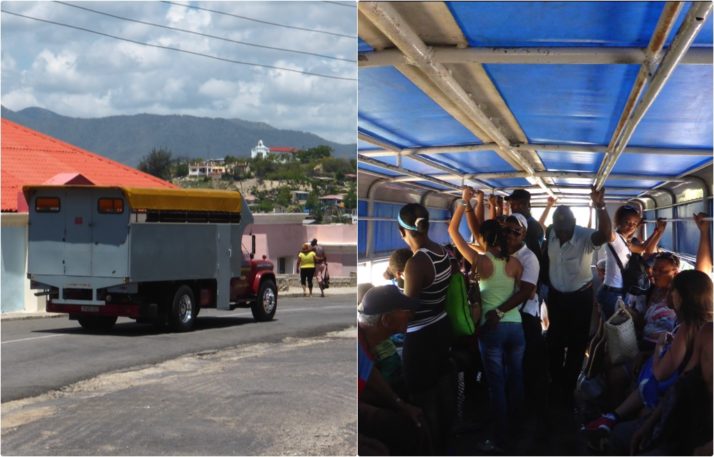Before we arrived in Cuba we wondered how common the classic 1940s and ’50s American cars would be, given that the newest would be 57 years old by now and their maintenance would have been severely hampered by post-Revolution trade embargoes. The fuel shortages during the Special Period of the 1990s meant many vehicles sat unused as people took to bicycles and public transport.
However, we soon learned that the resourceful Cubans have worked miracles to keep so many of them running, their tough life evident in a patchwork of dints, bumps, scrapes, makeshift repairs and resprays which only added to the charm, and complemented the dilapidation of their surroundings.
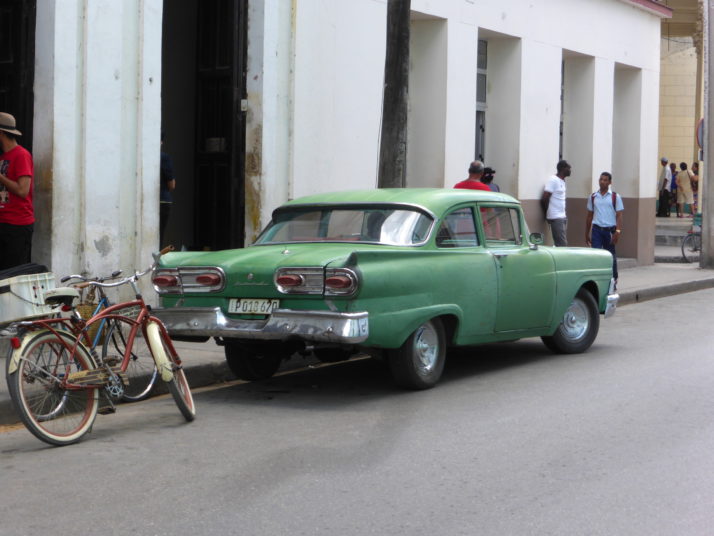
The thing we noticed most was the size of the classic American cars – they’re huge!

The modest tail fin puts this Ford in the mid to late 1950s, when pointed tailfins and chrome were the futuristic fashion – America was in the Space Race with the USSR at the time

At first glance, this de-badged 1958 Chevrolet Bel Air Coupe looked abandoned

But its bright red interior and new seats mean someone’s looking after it and it’s slowly being restored

Unlike this 1959 Chevrolet Bel Air Sedan, which is how I imagined I would see a lot of the cars in Cuba; up on stilts, patiently waiting for its owner’s fortunes to change

The oldest car we saw was this 1921 Ford Model T Touring which sadly doesn’t work anymore and sits in the back of a pottery factory in Trinidad
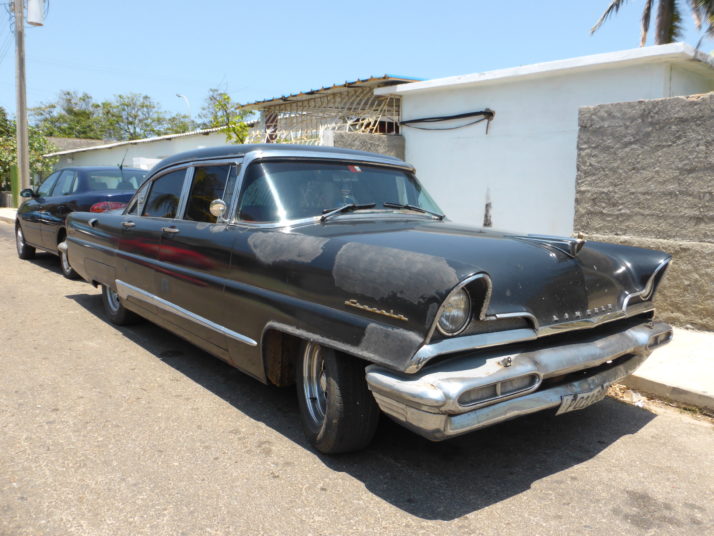
The largest ‘sedan’ we saw was this monstrous late 1950s Lincoln Premiere – even the 2-door version sits 6 people!
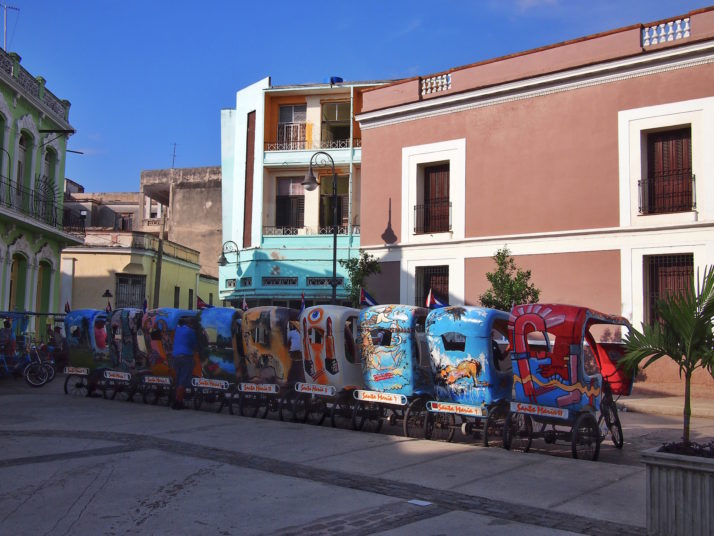
Many people took to cycling as their mode of transport in during the economic crisis known as the Special Period and “bici-taxis” or bicycle taxis are still a popular form of employment and transport today. They typically have a simple roof providing shelter from the sun and the rain, but we loved the unique design and colourful artwork on these bici-taxis in Camagüey

Slightly larger than a bici-taxi and unique to Cuba are CoCo-taxis, small motorised vehicles that get their name because they resemble the shape of a coconut

We’ve written about a few of our public transport experiences, such as taking a bench-seat passenger truck from Baracoa to Moa, a Pontiac colectivo from Moa to Holguin, and a ‘camion’ or converted truck which was pretty much standing room only! For the longer distances we usually used the Viazul coaches for the comfort of the seats and the air conditioning (which was a bit too cold sometimes, even for me!). There’s a rival service called Cubanacan which runs between Havana, Viñales and Trinidad and we’d recommend them as their pick-up and drop-off locations are more central than the Viazul stations
We made use of private taxis for bus station transfers and the odd half-day excursion. Typically they’d be Ladas which were pretty common on the roads of every Cuban city we visited. I’d say about half of them had been modified, sporting huge drain-pipe or even sewer-pipe sized exhausts!

Lovely examples of the more original, unmodified Ladas we saw. From front to back, I think they’re an AvtoVAZ VAZ-2103 (exported from Serbia as the Lada 1500); It’s precursor and first AvtoVAZ car the VAZ-2101 (Lada 1200/1300); and the yellow one at the back is likely an earlier revision still, as it more closely resembles the car the other 2 are based on, the Fiat 124. 3 generations in a street!
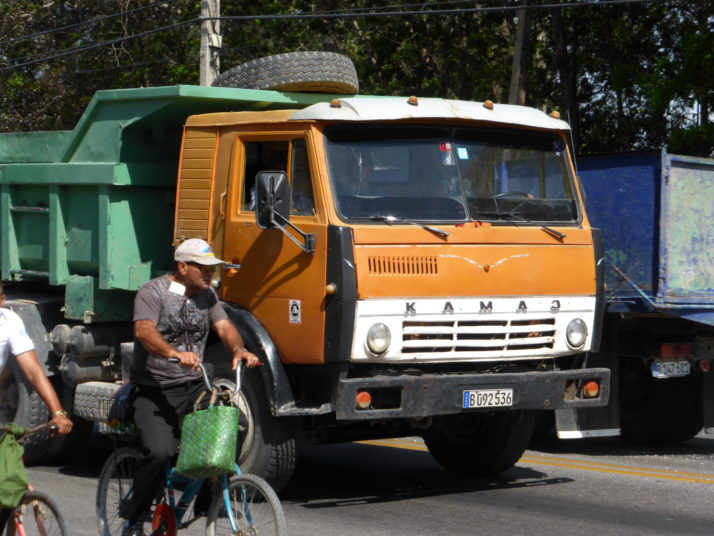
Familiar to us from our travels in Russia is the Russian brand Kamaz. We saw plenty of their trucks on the main roads
There are mechanical garage services like we have here in the UK, but we also saw a bit of roadside maintenance being carried out in the street too..

An advantage of a huge car is the boot can hold all the tools for an owner’s workshop, like this one in a back street in Havana’s Old Town

We also saw a couple of chassis that had been stripped and resprayed, though I’m not sure this particular shade was one of the manufacture’s original swatches..
The result of the restorations are amazing – even though we were in Cuba for 6 weeks, we never tired of looking at them and we never saw two cars exactly alike either..

A 1954 Chevrolet Bel Air 2-door Hardtop in a lovely metallic baby-blue

And a slightly newer Bel Air Sport Sedan from 1957. Chevrolet was the most common marque of classic car we saw in Cuba, which isn’t surprising given how popular they were in 50s and 60s America
Unsurprisingly, the cars in the best condition were to be found nearest the tourist money in Havana and Varadero. We found that the main road along the Varadero peninsula was ideal for classic car spotting..

A two-tone pink and white Pontiac

There were very few non-American classics from the 1950s, but we did spot this Mercedes-Benz W120

We spotted this near pristine Oldsmobile 98 sitting in a back street in Holguin. It looked even better when the sun came out!

I really liked seeing the whitewall tyres, and they’re a lovely complement to the paintwork on this beautiful Ford Fairlane 500
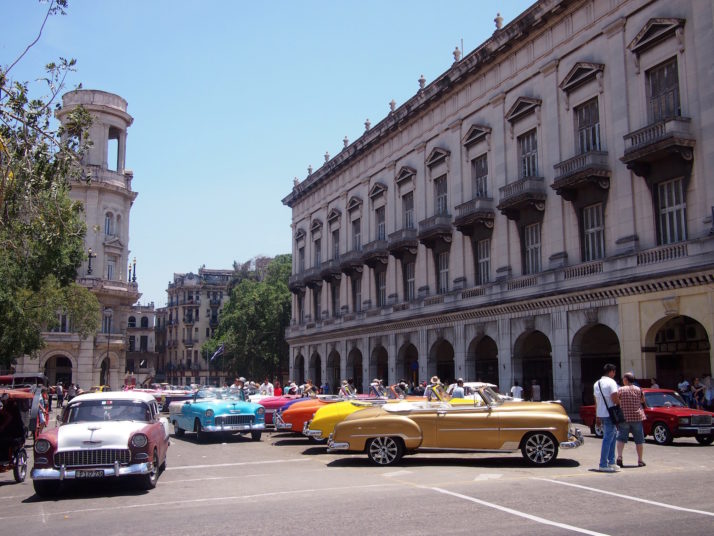
And speaking of paintwork, there was always a line up of gleaming, vibrant motorcars at the end of Parque Central opposite the Gran Teatro de la Habana

Havana’s Malecón was another great place to spot cars as it’s on the itinerary of all the classic car tours

 two year trip
two year trip Outside the Cuban building of Havana’s Fine Art Museum, sadly no photographs allowed inside
Outside the Cuban building of Havana’s Fine Art Museum, sadly no photographs allowed inside ‘El Tercer Mundo’ (The Third World) by Wilfredo Lam [photo credit:
‘El Tercer Mundo’ (The Third World) by Wilfredo Lam [photo credit:  Francis Alÿs is known for creating trails of paint from art galleries out into the surrounding cities
Francis Alÿs is known for creating trails of paint from art galleries out into the surrounding cities Wow! I guess we’ve arrived at Fusterlandia, José Fuster’s home and workshop
Wow! I guess we’ve arrived at Fusterlandia, José Fuster’s home and workshop A tile mural of the Granma yacht and some of the revolutionaries who sailed in her
A tile mural of the Granma yacht and some of the revolutionaries who sailed in her Fusterlandia details (clockwise from top left): giraffes; a heart; the Cuban Five; and cockerels
Fusterlandia details (clockwise from top left): giraffes; a heart; the Cuban Five; and cockerels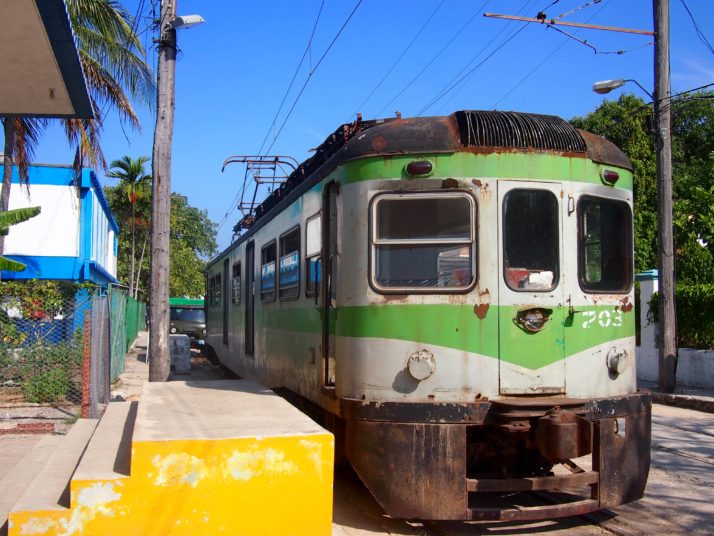 The rather dilapidated looking Hershey train at Casablanca station in Havana
The rather dilapidated looking Hershey train at Casablanca station in Havana The one carriage train was pretty full leaving Havana and even more people got on at the next few stops
The one carriage train was pretty full leaving Havana and even more people got on at the next few stops The huge sugar mill at Hershey is slowly disintegrating although its three chimneys remain intact for now
The huge sugar mill at Hershey is slowly disintegrating although its three chimneys remain intact for now A peaceful section of the river in the Hershey Gardens
A peaceful section of the river in the Hershey Gardens Artworks cover the surrounding buildings along the Callejon de Hamel
Artworks cover the surrounding buildings along the Callejon de Hamel Many of the famous cigar brands are made at the Partagas factory in Havana
Many of the famous cigar brands are made at the Partagas factory in Havana The interior atrium of the Partagas factory
The interior atrium of the Partagas factory The stunning main hall of the Napoleon Museum
The stunning main hall of the Napoleon Museum More busts and statues of Napoleon than you ever wanted to see, including his death mask in the bottom right
More busts and statues of Napoleon than you ever wanted to see, including his death mask in the bottom right The top floor includes this magnificent library and a roof terrace with views over the city
The top floor includes this magnificent library and a roof terrace with views over the city
















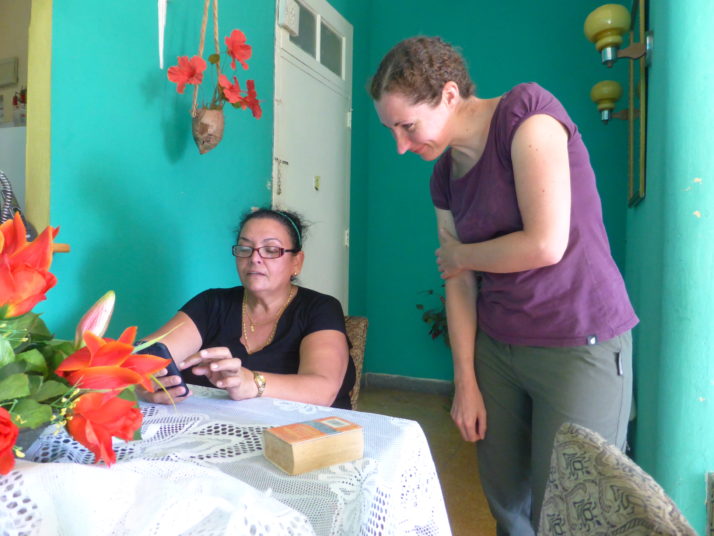
 Havana’s Malecon is another great place for classic car spotting
Havana’s Malecon is another great place for classic car spotting
 Poster showing convertible peso notes on the left and national pesos on the right – similar, no? The easiest way we found to tell them apart was that the CUCs have pictures of monuments and the MN notes have pictures of historic figures.
Poster showing convertible peso notes on the left and national pesos on the right – similar, no? The easiest way we found to tell them apart was that the CUCs have pictures of monuments and the MN notes have pictures of historic figures.
 Waiting in the ‘outside’ queue of the money exchange office in Baracoa before being admitted to the ‘inside’ queue and finally a very slow cashier
Waiting in the ‘outside’ queue of the money exchange office in Baracoa before being admitted to the ‘inside’ queue and finally a very slow cashier A national peso shop
A national peso shop
 Cake, two scoops of ice cream, sauce and a swirl of marshmallow fluff – not bad for £0.20!
Cake, two scoops of ice cream, sauce and a swirl of marshmallow fluff – not bad for £0.20!
 Bread bun and jam tart lunch in Santiago carried away from the bakery in hand
Bread bun and jam tart lunch in Santiago carried away from the bakery in hand
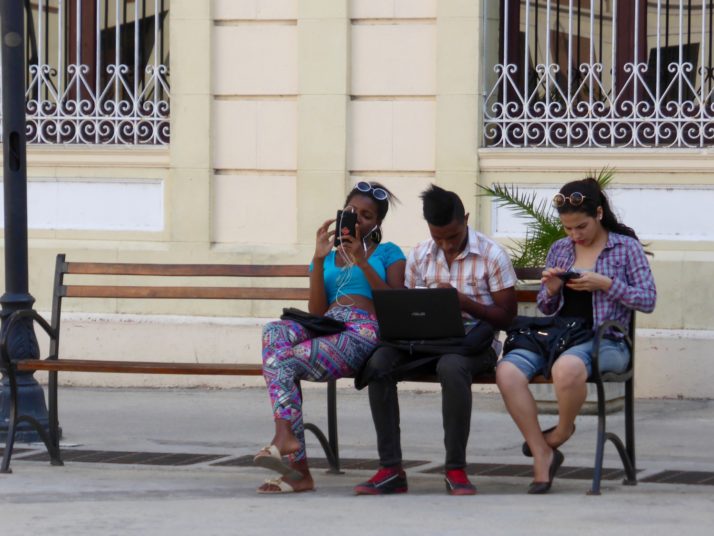 Cubans using the public wi-fi in a square in Camagüey
Cubans using the public wi-fi in a square in Camagüey
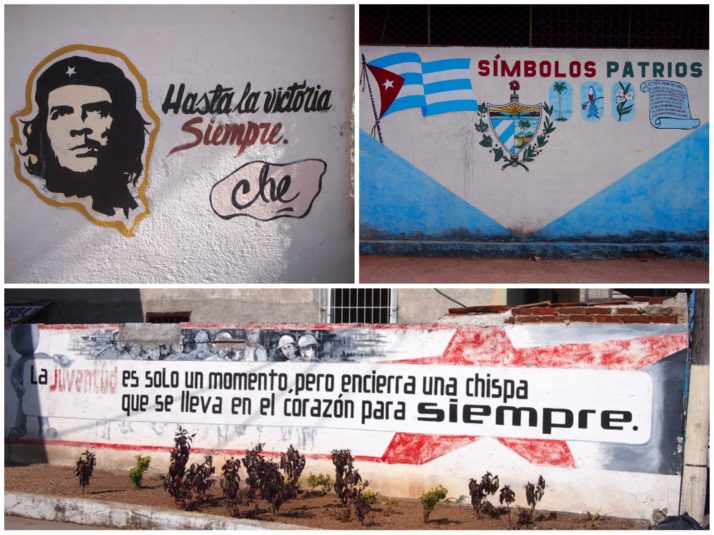 Political murals in Cuba (clockwise from top left): the ever present Che; national symbols; “Youth is only a moment, but contains a spark that leads into the heart forever”
Political murals in Cuba (clockwise from top left): the ever present Che; national symbols; “Youth is only a moment, but contains a spark that leads into the heart forever”
 Casa particulars are easy to spot as they display this blue symbol outside. There always seemed to be far more available than the number of tourists that we saw around town
Casa particulars are easy to spot as they display this blue symbol outside. There always seemed to be far more available than the number of tourists that we saw around town
 Beautiful tiled floors in our casa in Santa Clara
Beautiful tiled floors in our casa in Santa Clara
 One morning at breakfast we noticed that a Santeria altar had appeared in the living room of our casa in Varadero – you can see the representations of the gods in front of the bright pots
One morning at breakfast we noticed that a Santeria altar had appeared in the living room of our casa in Varadero – you can see the representations of the gods in front of the bright pots







